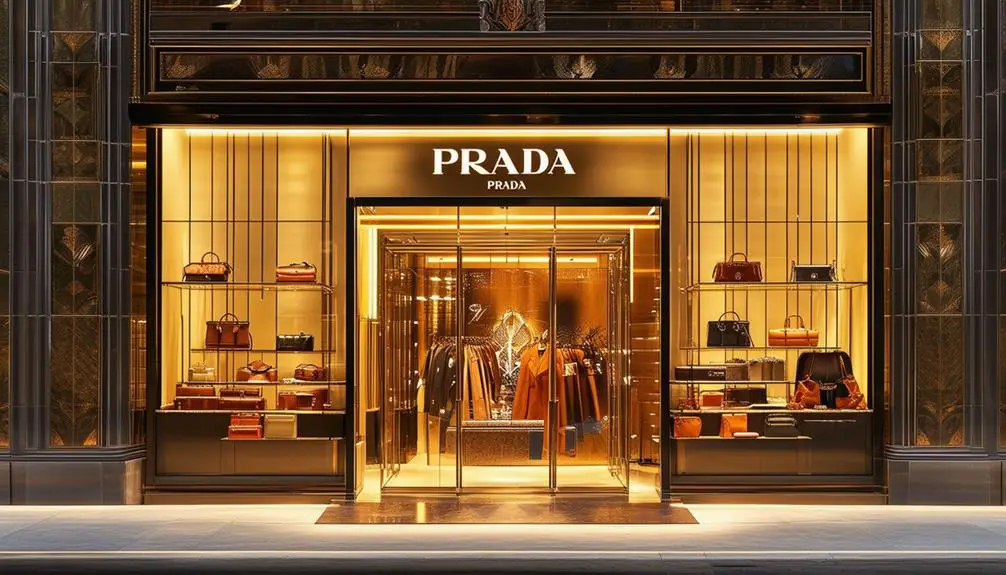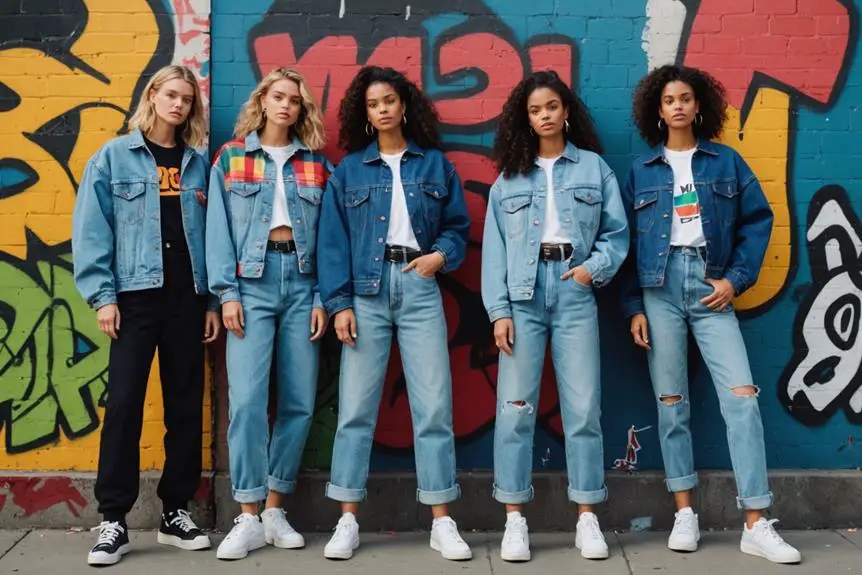Prada's history is truly captivating, beginning in 1913 when Mario and Martino Prada founded the brand in Milan. Initially focused on luxury leather goods, Prada gained prominence when it was recognized as the Official Supplier to the Italian Royal House by 1919. The brand underwent a significant transformation under Miuccia Prada's leadership starting in the 1970s, introducing revolutionary nylon bags and ready-to-wear collections that redefined modern fashion. Innovative designs and collaborations, such as the Re-nylon initiative highlighting sustainability, have further reinforced Prada's esteemed position in the industry. Today, Prada remains at the forefront of fashion, continually challenging norms while prioritizing market expansion and cultural relevance. To understand the intricacies of its evolution, there are many more insights to explore.
Origins of Prada
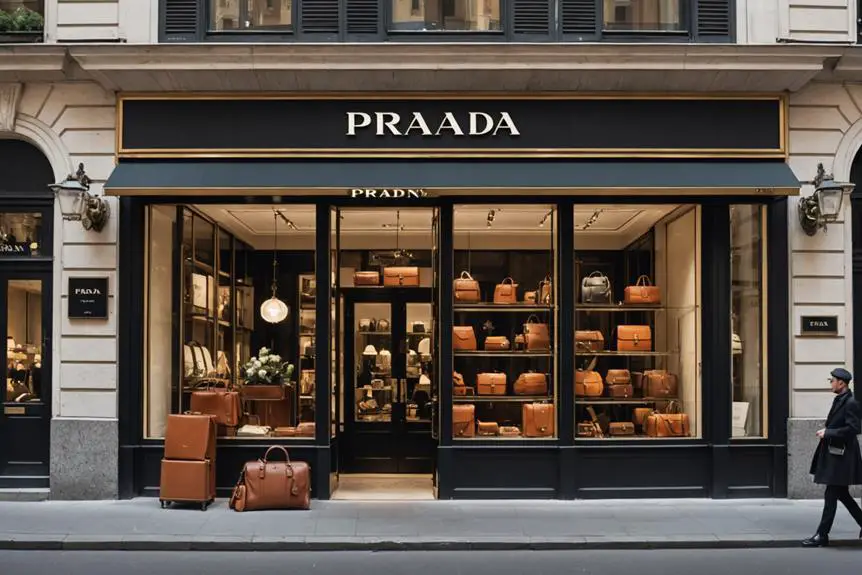
Nestled in the heart of Milan, Prada's origins trace back to 1913 when Mario and Martino Prada set out to create a brand synonymous with luxury leather goods. The brothers initially focused on high-quality handbags, trunks, and travel accessories, establishing their first store in the iconic Galleria Vittorio Emanuele II. This location not only highlighted their commitment to craftsmanship but also positioned Prada within the luxury fashion landscape of Italy.
In 1919, the brand gained significant recognition as it was appointed the Official Supplier to the Italian Royal House, a distinction that allowed it to proudly display the House of Savoy coat of arms on its products. This royal endorsement reinforced Prada's status as a premier luxury brand.
As a family business, leadership shifted to Mario's daughter, Luisa Prada, in the 1970s, who expanded the product offerings. The arrival of Miuccia Prada during this period brought a fresh perspective to the brand, steering it toward innovative designs. While the origins of Prada lie firmly in leather goods, this early foundation set the stage for the transformative growth that would follow in the decades to come.
Miuccia Prada's Transformation
With Miuccia Prada's entry into the family business in the 1970s, the brand began a significant transformation that would redefine luxury fashion. Initially met with skepticism due to her unconventional background, Miuccia quickly proved her vision through innovative designs. She revolutionized Prada by introducing nylon bags, such as the iconic Vela bag in 1984, which marked a shift from traditional luxury materials.
Key elements of Miuccia's transformation include:
- The introduction of the "ugly chic" concept, challenging traditional aesthetics.
- Launching Prada's first ready-to-wear collection in 1988, characterized by a darker color palette and avant-garde styles.
- A strategic partnership with Patrizio Bertelli, leading to global expansion and brand diversification.
- The creation of the Miu Miu label in the 1990s, targeting a younger demographic.
Miuccia's approach not only redefined luxury but also positioned Prada as a leader in modern fashion. By embracing minimalist designs and unconventional materials, she created a new narrative in the industry, solidifying Prada's status as a pioneer of contemporary style. Through her transformative vision, Miuccia continues to influence the luxury fashion landscape today.
Iconic Products and Collections
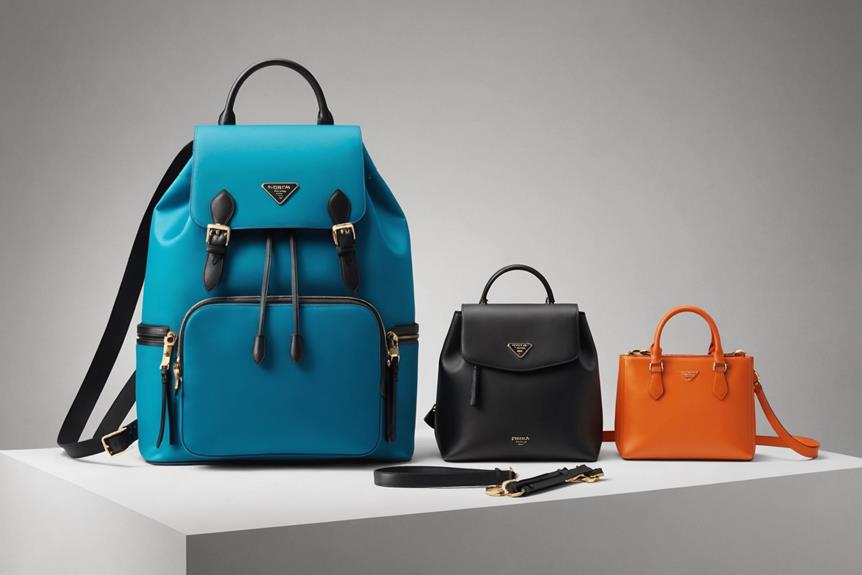
Miuccia Prada's innovative vision paved the way for a series of iconic products and collections that have left an indelible mark on the fashion industry. The introduction of the Prada Nylon Bag in 1984 revolutionized the use of nylon in luxury fashion. This collection showcased innovative materials, including the Vela backpack, which quickly became a staple. By 1988, Prada launched its first ready-to-wear collection at Milan Fashion Week, emphasizing a minimalist aesthetic and dark tones that defined the brand's style.
In 1997, Prada Linea Rossa emerged, merging luxury with streetwear, and it gained renewed attention after its relaunch in 2018. The release of the iconic Prada bowling bag in 2000 created unprecedented demand, leading to waiting lists worldwide, a demonstration of its allure. More recently, the Re-nylon initiative, launched in 2020, highlighted Prada's commitment to sustainable fashion, and the Re-nylon mini bag was recognized as Lyst's Handbag of the Year in 2022. These products not only reflect Prada's dedication to innovation but also its ability to adapt and shape trends within the ever-evolving landscape of luxury fashion.
Collaborations and Fashion Shows
Prada's collaborations and fashion shows serve as a dynamic platform for exploring the intersection of art, culture, and fashion. The partnership between Miuccia Prada and Raf Simons, who joined as co-creative directors in 2020, emphasizes innovative design through collaboration. Their first joint collection in Spring/Summer 2021 masterfully blended 1950s influences with modern sportswear aesthetics, showcasing the evolution of the brand's aesthetic.
Prada's fashion shows are not just events but a celebration of seasonal collections that reflect both historical influences and contemporary styles. Key highlights include:
- A focus on simplicity in the Fall-Winter 2023 show, referencing modest professions from World War II.
- The blending of art, film, and fashion through collaborations with notable artists, enhancing its cultural impact.
- A continuous evolution of aesthetic that keeps the brand relevant and influential.
- The ability to challenge norms and provoke thought about fashion's role in society.
Through these collaborations and fashion shows, Prada maintains its position as a powerful voice in fashion, illustrating the profound connections between design, culture, and history.
Current Status and Future Vision
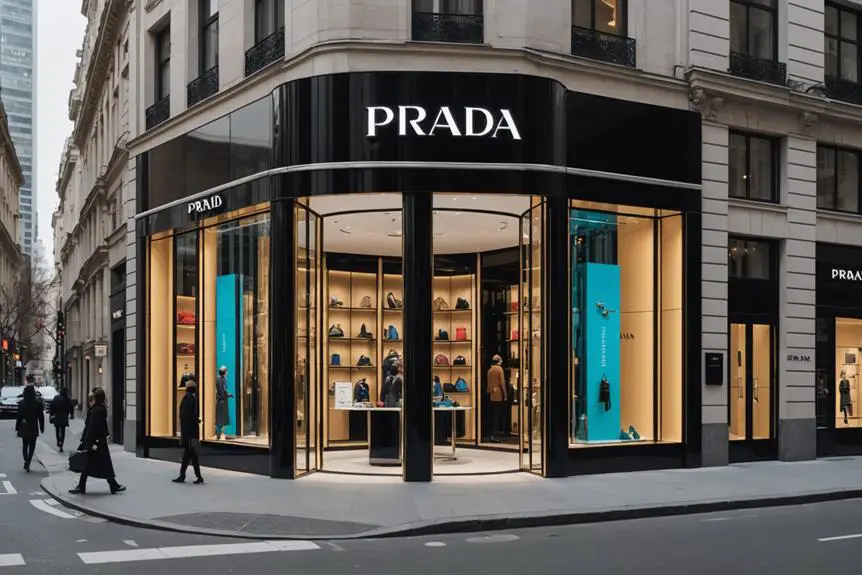
In the luxury fashion landscape, Prada stands out not only for its rich heritage but also for its forward-thinking strategies. Currently, the Prada Group, co-owned by Miuccia Prada and Patrizio Bertelli, showcases a robust presence, generating an impressive €4.2 billion in revenue in 2022. This success underscores the brand's commitment to strategic growth while maintaining a strong brand identity characterized by its iconic green color.
Prada's future vision emphasizes innovation, particularly through sustainable practices. Initiatives like the Re-nylon project highlight the brand's focus on eco-friendly materials and production methods, aligning with contemporary consumer values. Under the leadership of CEO Andrea Guerra, who took the helm in January 2023, Prada is also pursuing a dual listing of its stock, which signals a proactive approach to expanding its market reach.
The anticipation surrounding upcoming innovative collections illustrates Prada's dedication to blending traditional luxury with modern aesthetics. By encouraging aspiring fashion professionals to engage with the brand, Prada not only solidifies its status within the luxury fashion sector but also paves the way for a sustainable and prosperous future.
Frequently Asked Questions
What Is the Story Behind Prada?
Prada's story intertwines luxury, innovation, and cultural shifts. You'll discover how its aesthetic evolved, incorporating unexpected elements and sustainability, while consistently influencing fashion trends and redefining modern luxury through bold design and visionary leadership.
Who Is the Real Owner of Prada?
You'll find that Prada is co-owned by Miuccia Prada and her husband, Patrizio Bertelli. They've both greatly influenced the brand's creative and business strategies, driving its success in the luxury fashion industry.
Why Is Prada so Iconic?
Prada's iconic status stems from its innovative designs, commitment to craftsmanship, and ability to challenge fashion norms. By blending luxury with practicality, it consistently sets trends, enchanting consumers and influencing the industry at large.
What Is the Meaning of Prada?
Prada represents a blend of luxury, innovation, and cultural commentary. Its designs challenge norms, creating an identity that encourages you to embrace individuality while maneuvering through the complexities of modern fashion and societal expectations.
